Last updated: March 6, 2023
Article
Hidatsa Flintknappers, Potters, and Smallpox
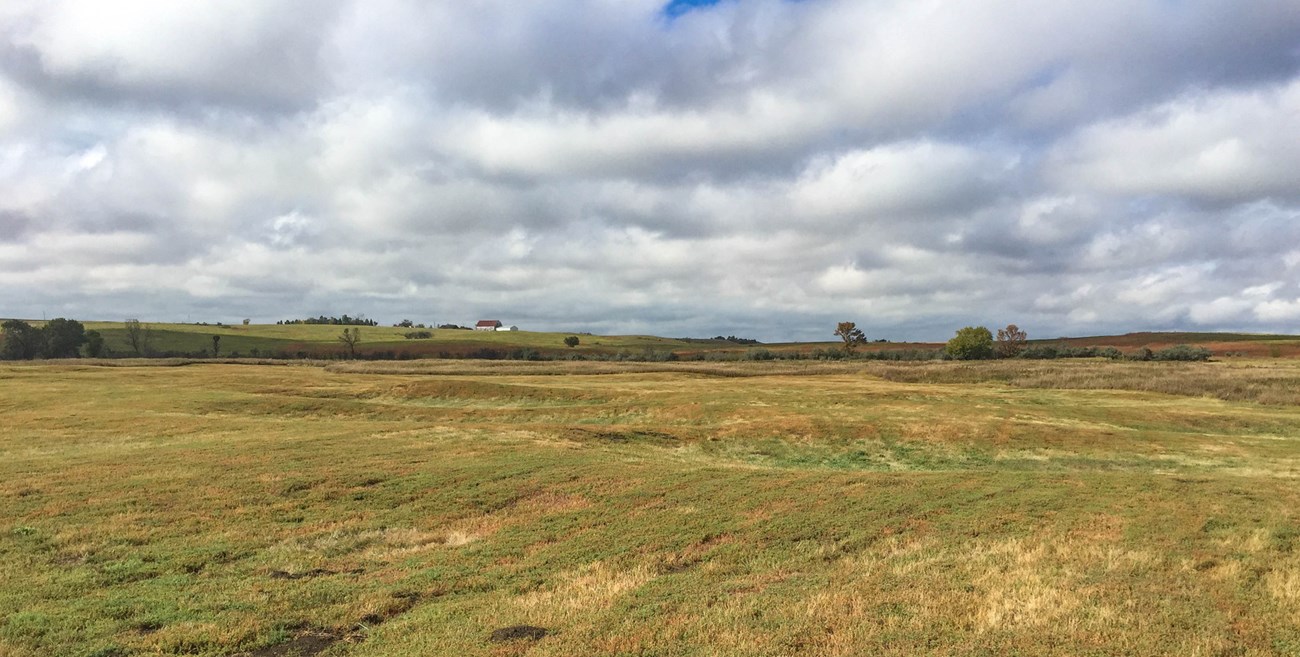
Each group occupied a socially, politically, and economically autonomous earthlodge village in a tribal territory that spanned from Painted Woods Creek in the south to the confluence of the Yellowstone and Missouri Rivers to the north. The extent of Hidatsa territory changed somewhat over time, but the core Hidatsa heartland was the area around the junction of the Knife and Missouri Rivers.
The Missouri and Knife Rivers provided water and aquatic resources for the earthlodge villagers, who lived in large, round, tightly clustered earthlodge houses. The floodplain adjacent to the rivers provided much needed timber, fertile soils for crops, and shelter during inclement winters. The villages were located on the upper river terrace bluffs, safe from seasonal flooding and hostile groups. The upland grassland prairies afforded access to wild resources such as prairie turnips and one of the most essential resources for the Hidatsa—bison.
The Impact of Smallpox
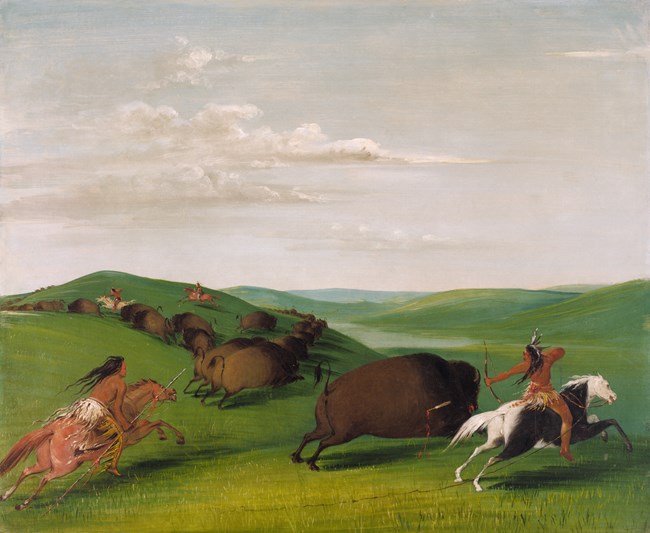
At Knife River, the three groups built new communities on or near the sites of their old settlements and set the stage for a unified Hidatsa tribal identity to form in the late eighteenth century. The Hidatsa-Proper returned to the village of Big Hidatsa and the Awaxawi settled a new village, Amahami. Between 1787 and 1797, the Awatixa established a village known today as Sakakawea. It is named after Lewis and Clark’s famous female guide who reportedly resided there with her French-Canadian husband, Toussaint Charbonneau.
Meriwether Lewis and William Clark resided near the Knife River in the winter of 1804-1805 and wrote accounts of life in the Hidatsa villages. In 1834, warfare with the Lakota nearly destroyed the Sakakawea and Amahami villages. The village of Big Hidatsa remained the permanent home of the Hidatsa until 1837, when another smallpox epidemic resulted in further social reorganization.
The Material Remains
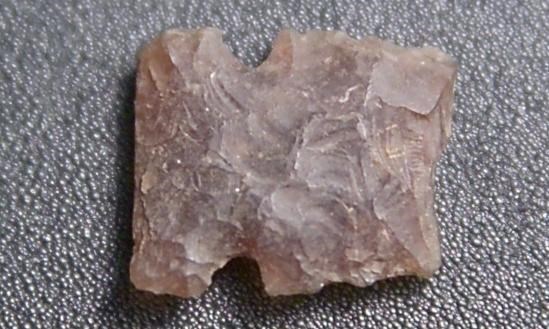
Big Hidatsa tells a similar story, since the Hidatsa occupied this village continuously throughout the seventeenth and eighteenth centuries. Later villagers took artifacts from deep, stratified contexts beneath the village. Excavations yielded 2,200 classifiable stone tools, and all except five showed evidence of reuse. Some of these artifacts dated back thousands of years. Archeologists uncovered a 7,000-8,000-year-old side-notched dart point known as a Simonsen point, which was retouched and reused by eighteenth-century villagers as a cutting tool.
Archeologists found many projectile points at both sites that do not quite fit in with the rest of the artifacts within the soil stratigraphy. These points are mixed rather randomly among the more recent midden deposits, providing further proof of scavenging. For Hidatsa people who needed to construct weapons for hunting or protection from enemies, searching for the points their ancestors made offered a practicable solution when smallpox took the lives of so many. In the face of such devastation and population loss, tool production might have been a relatively diminished activity for villagers while the community recovered.
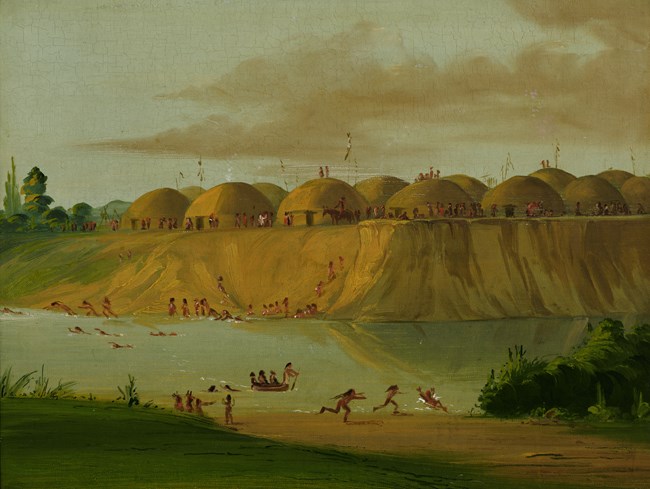
Archeologists analyzed over 3,000 body and rim sherds recovered from excavations at the three village sites. For pots, surface treatments and decorations are a manifestation of teaching and learning frameworks. These visible characteristics of vessels signal meanings that are performed in the cultural contexts of feasts and rituals. Archaeologists use these attributes to construct classification schemes, which can reveal chronological patterns changing through time.
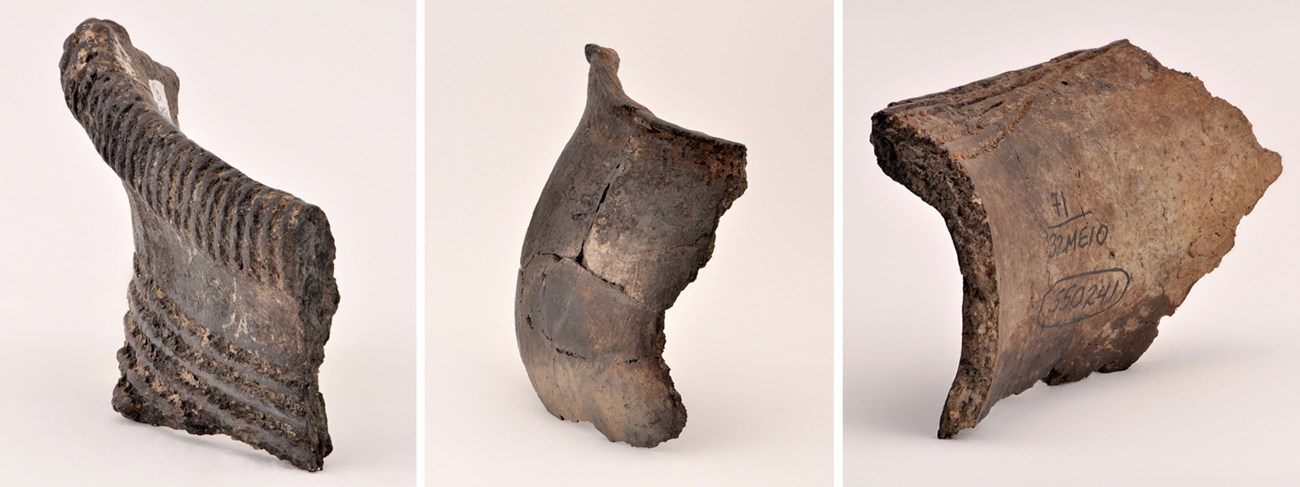
Before firing, potters often burnished the pots, which involved partially wetting the surface and then rubbing it with a smooth stone. Not only does burnishing create a smooth and shiny appearance, but it reduces permeability of the vessel wall and increases effective heating. If vessels broke during firing, the pieces were typically reused for different tasks around the village, such as parching corn, holding hot coals, or serving as palettes for pigments.
By the nineteenth century, manufacturing activities did not take place in the same social contexts as they had before the introduction of the fur trade and Euroamerican diseases. Flintknapping and pottery making were still everyday utilitarian pursuits, but their importance in ritual behavior and social signaling clearly changed. While clay pots and stone tools continued to reflect an artistic and technological industry, archeology suggests the villagers may have held the workmanship and labor to a lower standard.
Traditionally, anyone who wanted to learn a craft bought the rite through gift-giving. That person then became an apprentice who could use the designs of their teacher. For apprentice potters, increased regional warfare and population decline restricted the mastery of their craft. The loss of expert teachers caused higher individual workloads for the surviving potters, who responded by producing vessels with less surface embellishments and personal touches.
Traditional Technologies in the Present
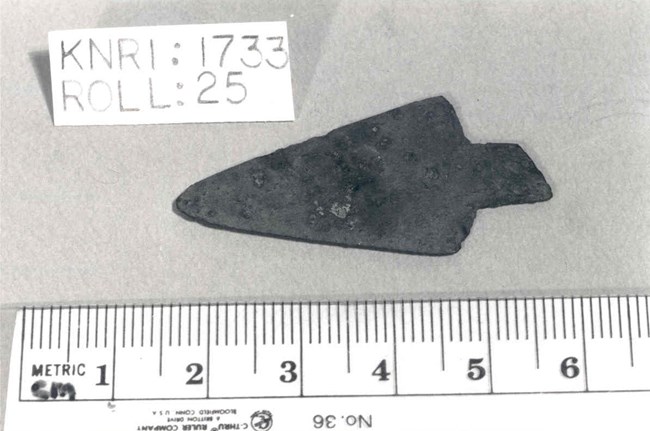
Yet during this period, Plains tribes did not use many Euroamerican trade objects for the purposes Euroamericans would have ascribed to them. Non-functional metal objects were often dismantled and used to manufacture alternative items such as personal ornaments and weapons. Old, beat-up brass and copper kettles were reused as raw materials for arrows.
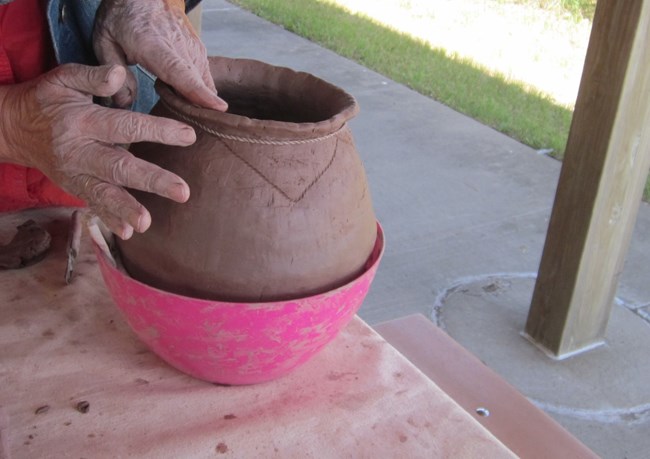
Sources
Ahler, Stanley A., Thomas D. Thiessen, Michael K. Trimble1991 People of the Willows: The Prehistory and Early History of the Hidatsa Indians. University of North Dakota Press. Grand Forks, North Dakota.
Baker, Gerard, Calvin Grinnell, Bernard Fox, Carol Fredericks Newman, Wanda Fox Sheppard
2021 Our Story of Eagle Woman Sacagawea: They Got It Wrong. The Sacagawea Project Board of the Mandan, Hidatsa & Arikara Nation. The Paragon Agency. Orange, California.
Hollenback, Kacy LeAnne
2012 Disaster, technology, and community: Measuring responses to smallpox epidemics in historic Hidatsa villages, North Dakota. Diss. The University of Arizona.
Nieves Zedeño, Maria, Kacy Hollenback, Christopher Basaldu, Vania Fletcher, and Samrat Miller
2006 Cultural Affiliation Statement and Ethnographic Resource Assessment Study for Knife River Indian Villages National Historic Site, Fort Union Trading Post National Historic Site, and Theodore Roosevelt National Park, North Dakota. Bureau of Applied Research in Anthropology, University of Arizona, Tucson.
Thiessen, Thomas D.
1993 The Phase I Archeological Research Program for the Knife River Indian Villages National Historic Site. Occasional Studies in Anthropology, no. 27. National Park Service. Midwest Archeological Center. Lincoln, Nebraska.
